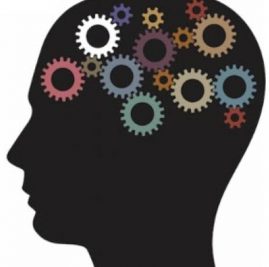The American Institute of Stress (2017) suggested that in 2014, 77% of people in the United States regularly experienced physical symptoms associated with stress, such as fatigue, headache, and muscle tension and 73% of individuals regularly experienced psychological symptoms associated with stress including symptoms of anger and anxiety. However, the individual experience of stress can be difficult to identify. The way in which we even think about stress can impact our functioning.
While stress levels vary from one individual to the next, it is particularly important for individuals to engage in activities that “recharge their batteries” particularly when they are responsible for other people either in their professional or personal lives. Dattilio (2015) described the protocol for flight attendants to instruct all passengers to place oxygen masks on themselves in the event of an emergency, prior to helping others, as an analogy to emphasize the importance of other care providers taking care of themselves first.
Though stress-management may be related to self-care practices, self-care is understood to be both reactive and preventative, to address personal issues as they come as well as building a defense against future stressors (Myers et., al; 2001; Dattilio, 2012). Self-care spans several aspects of an individual’s daily life including physical health, mental health, social-emotional circumstances, spiritual affiliations and vocational balance. Often times, what dictates “enough” self-care is highly individualized.
Self-care is crucial to sustainable recovery in chronic relapsing illnesses such as mental health symptoms, medical issues, and pain where lifestyle behaviors can have a large impact on outcomes. Self-care affects how often we get sick, the severity of physical/mental illnesses or injury, how much time we take off from work, and how we perform out daily responsibilities.
Some ideas for self care include activities that require little to no cost and small amounts of time:
– Going for a walk
– Taking a bath
– Watching the clouds,
– Feeding the birds
– Reading a magazine
– Exercising
– Framing a picture
– Gardening
– Redecorating
– Doing a puzzle
– Calling an old friend
– Playing cards
– Listening to music
– Looking at pictures of picturesque scenery
So remember, it’s not only healthy, but necessary to take a break to take care of you. If you or someone you know needs additional support or ideas for healthy living, contact your primary care physical or local mental health agency for more information.
Author: Jessica Henninger, M.A., M.S.
References:
American Institute of Stress (2017). What is stress?: 2014 stress statistics. Retrieved from https://www.stress.org/daily-life/
Dattilio, F. M. (2015). The Self-Care of Psychologists and Mental Health Professionals: A Review and Practitioner Guide. Australian Psychologist, 50(6), 393-399. doi:10.1111/ap.12157
Myers, S. B., Sweeney, A. C., Popick, V., Wesley, K., Bordfeld, A., & Fingerhut, R. (2012).
Self-care practices and perceived stress levels among psychology graduate students. Training and Education in Professional Psychology, 6(1), 55-66. doi:10.1037/a0026534



